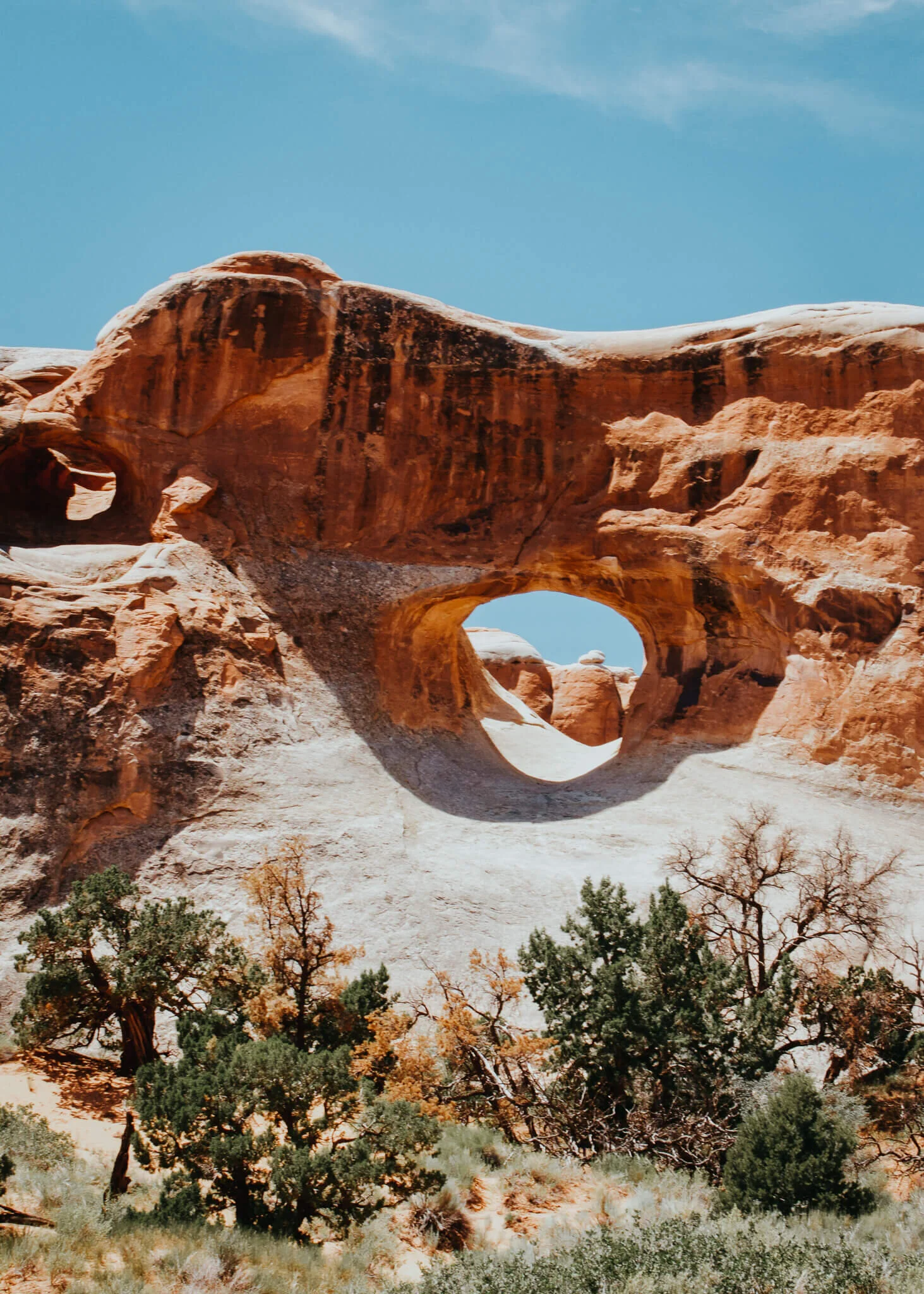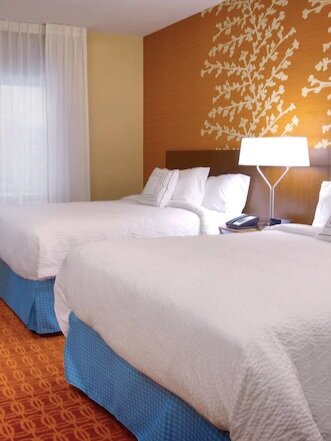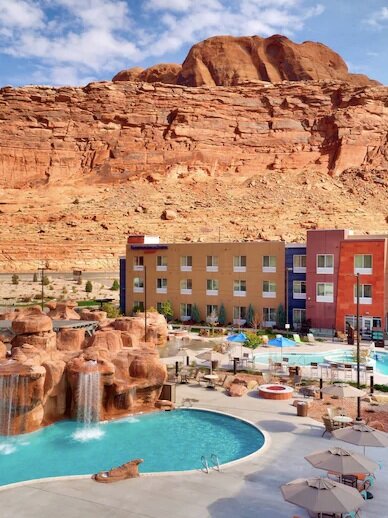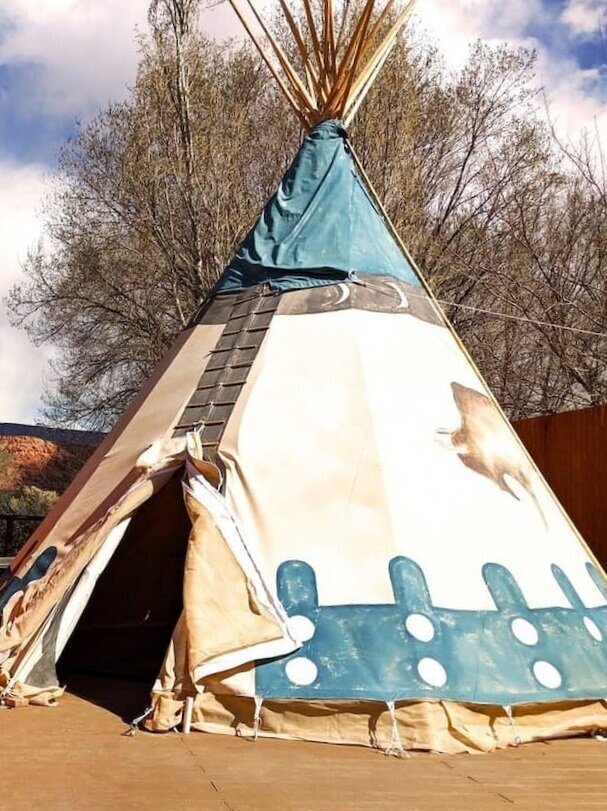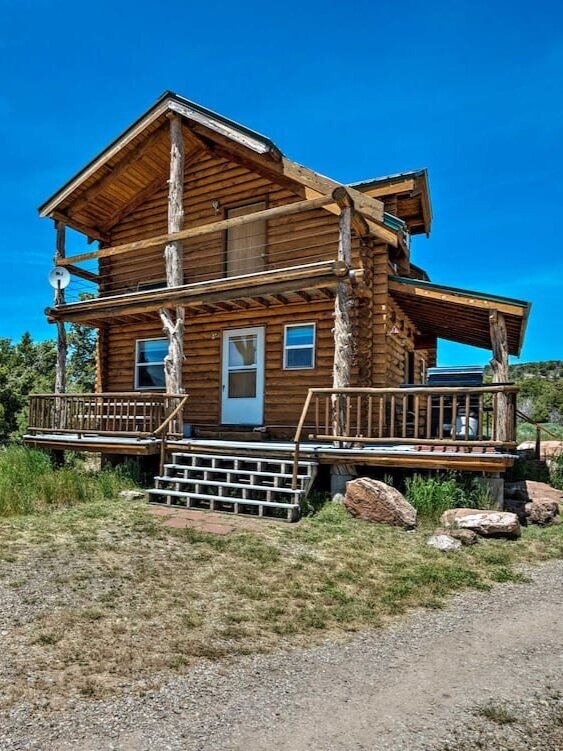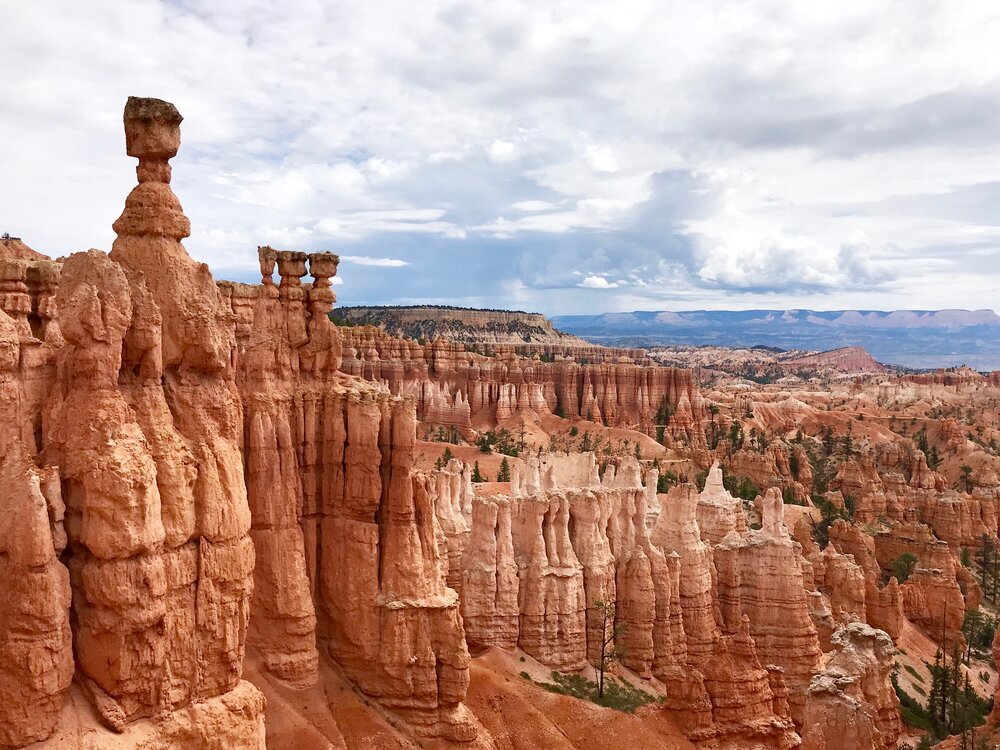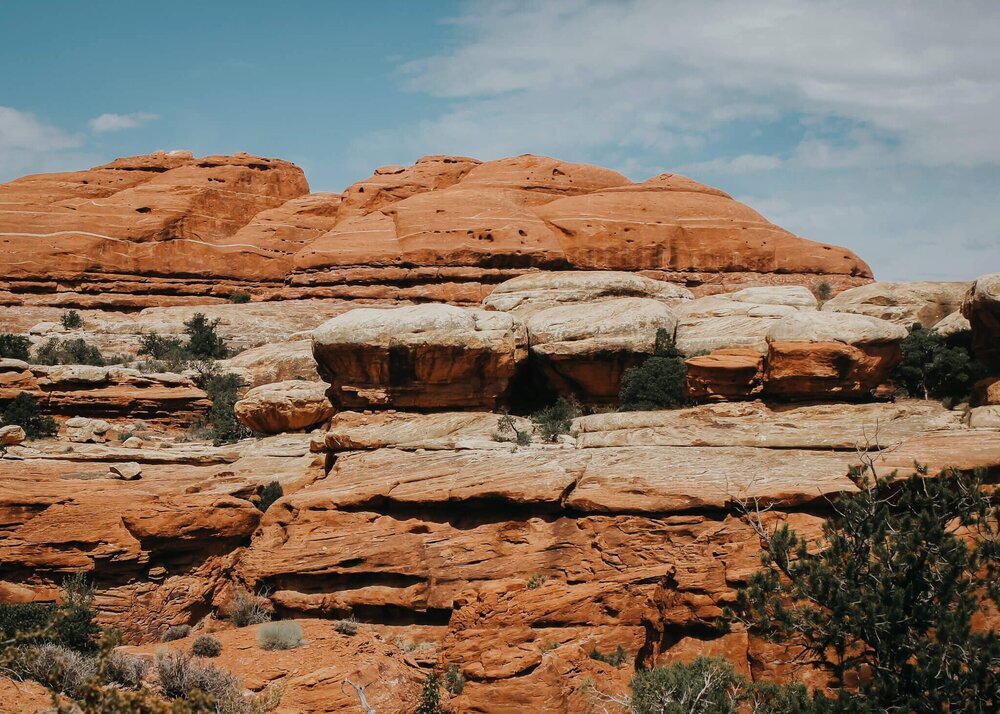Arches National Parks Travel Guide
If you want to see where nature decided to truly show off, you are in the right place. Arches National Park, a scenic playground of dusty red rock, is a classic example of eastern Utah’s incredible desert landscape.
Arches National Park brings visitors face-to-face with the immense power of nature and the impressive artistry it can create over a good hundred million years. Although the arch is its namesake - and there 2,000 or so littered throughout the land - the park also delivers tall spires with layered sandstone, delicately balanced rocks and endless waves of fins. While it is a simple park to visit, trail names like “Fiery Furnace,” “Devil’s Garden” and “Dark Angel,” remind us that Arches remains a rugged landscape that is equal parts fragile and strong.
During my visit, I had a reliable rotation of thoughts whilst staring at a never-ending foray of large rock formations: how on Earth did it form into that shape? Are we sure it’s stable? Why is it so hot!? Over and over on loop these thoughts persisted, though the last one more so than the others. Let’s just say that I strongly advise you to visit outside of July and August.
Ready to plan your next adventure to Arches? Let’s dig in!
Table of contents
Snapshot
History & Background
Itineraries
What To See & Do
When to Visit
Travel Logistics
Where to Stay
Last Minute Tips
Other Sights Nearby
Location
Utah, USA
Best for
Nature strolls, geology enthusiasts
When to Go
Spring or fall
How long to stay
2-3 days
Visitors / year
1.6 million
Let’s start at, well, the start. Some 300 million years ago - yes, we’re starting that far back - the land that is now Arches was a sea. Eventually it evaporated and the residual salt bed liquified and rose into salt domes and anticlines, which are a type of fold that creates an arch shape. And that’s that! Just kidding. Wouldn’t it be easy if that was it? Boom, arches, done. But no, Earth took its sweet, sweet time with its desert passion project so we still have a long road ahead.
To keep it brief, we’ll speed up to when the Early Jurassic period rolled around (circa two million years ago) and with it came a new desert climate. During this time, the wind also went buck wild and started throwing brown-yellow Navajo Sandstone debris all over the place. Another million years casually passed by and the wind stirred up a new concoction of salmon-colored Entrada Sandstone and sprinkled it on top of everything.
Over time, the layered rocks cracked and water slipped in and froze. The pressure from this expanded the rock, breaking bits and pieces off as it went. The wind tided up the whole place while erosion chiseled the land into what it looks like today. You may be wondering, but why an arch? Good question. The arch shape withstood the test of time for its efficient load-bearing abilities which distributes weight in the most stable manner. Who’d have thunk that something with a gaping hole in it would qualify as most stable? Surely not me, but who am I to question science?
As for humans, ancient Puebloans and Fremont peoples lived in the area around 10,000 years ago and ooh-ed and ahh-ed at the arches every day until they packed up camp for unknown reasons about 700 years ago. (Ten bucks says they were fed up with the heat.) They left behind evidence of their stay with fascinating carvings that visitors can be view at Wolfe Ranch and Courthouse Wash.
Tip: You can see how arches’ geologic history unfolded when looking at the colors of the rock, which are sometimes layered, as the sandstone was deposited millions of years ago!
1 day
Enjoy the scenery as you drive to Devil’s Garden where you can explore for hours. Stop at Skyline Arch.
Check out Delicate Arch at sunset and peek at Balanced Rock on your way out.
2-3 Days (recommended)
Spend the day acquainting yourself with the park by driving Arches Scenic Drive and making short stops along the way. End at Delicate Arch for sunset.
The next day, visit Devil’s Garden in the morning and the Windows Section in the afternoon. Both areas offer an array formations and arches.
4+ days
Do everything listed under “2-3 Days” and add in other sights and longer hikes.
Check out prehistoric art at Courthouse Wash. At Devil’s Garden, take the Primitive Trail instead. Maybe even snag a permit to explore the Fiery Furnace!
Tip: Read “Desert Solitaire,” Edward Abbey’s ode to arches and canyon country, before visiting to gain a deeper appreciation of the landscape.
Arches SceniC Drive | 36 miles
Even if you never got out of your car, you’d still have a fantastic view the entire time. Do I recommend this? No, please get out of your car. But it goes to show how amazing the scenery is at every turn. The drive is 18 miles from the park entrance to Devil’s Garden trailhead at the northernmost end of the park with two short additional roads to Delicate Arch and the Windows.
Visitor Center | pit stop
A good first stop at any national park! A visit here is essential if you want your trip to be more than “just staring at rocks.” It offers an abundance of information about the land’s geology, ancient culture and natural history, as well as giving you a chance to pester a knowledgable ranger with any questions. The visitor center gets bonus points for its large windows, AC and a water spigot to fill up your water bottle - you’ll want to, I promise.
Park Avenue | 2 miles
This is a good first or last stop since it’s so close to the park entrance. It is a mile walk from the trailhead to the Courthouse Towers, which is considered the end, and another mile back to your car. Along the way, you can spy the Three Gossips.
Balanced Rock | pull over
It’s nearly impossible not to visit this wonder, mostly because it sits right on the side of the road but also because a rock sitting atop a rock is truly hard to miss. It’s a quick stop; park and walk a teensy bit to get to it and then stroll around the base. While not an arch, it was one of my favorite sights merely for its uniqueness.
Balanced Rock
Sand Dune Arch
Sand Dune Arch Trail
sand dune & Broken Arches | 0.3 - 2 miles
It’s a quick jaunt to see Sand Dune Arch and about two miles roundtrip to reach Broken Arch. If staying at Devil’s Garden Campground, this trail is accessible from there.
Skyline Arch | Pull over
This is a quick stop to a very pretty arch that looks a bit meatier than its counterparts. “Meatier” may be a weird way to describe an arch, I realize. It’s just thicker, perhaps.
Skyline Arch
The Windows & Turret Arch | 1 mile
This is a neat area, one of my favorites in fact, as it feels less like a trail and more like a happy place to frolic and meander. Here you’ll see North Window, South Window and Turret Arch. There is also a primitive trail if you want to stretch the legs more. To get to the Windows, pull off Arches Scenic Drive. Make sure to marvel at a few less famous formations along the way to the trailhead parking area.
Double Arch | 1.2 mile
After (or before) the Windows, make your way to Double Arch. Parking can be tough so I recommend just walking over; it’s only 0.1 miles between the trailheads so you’re likely to make it in one piece. From the trailhead, it’s 0.3 miles to Double Arch, which is the largest one in the whole place.
Devil’s garden Loop | 5 - 7.2 miles
This trail, at the far end of Arches Scenic Drive, offers the most robust overview of the park. There are seven different arches to check out with most conveniently being less than one mile into the trial. First you come across Tunnel Arch and Pine Tree Arch, then at a mile in you see Landscape Arch, Partition Arch, and Navajo Arch. If you keep going, you will find Double O Arch and Dark Angel Arch, which is 2.5 miles from the trailhead.
If you have gas in the tank and are interested in a more rugged experience, take the Primitive Trail back rather than returning the way you came. Pop onto it at Double O and take it all the way back to the main trail. This route leads you past Private Arch, Top Story Window, Fin Canyon and Crystal Arch.
The Devil’s Garden
Delicate Arch
Trail to Delicate Arch
Delicate Arch | 3 miles
This is probably the world’s most well-known arch. At the very least, it’s certainly the most visited. The trail meanders over a rock face and past narrow sections until you emerge to meet Delicate Arch - and its crowds. No matter the time of day it is a busy place; sunrise may be the least crowded, or perhaps midday since the heat turns people away. Sunset is peak people time but most visitors are respectful of everyone wanting that photo and keep their time standing underneath arch to a minimum. Despite the crowds, it’s popular for a reason and hiking it feels like walking on another planet.
TIP: If doing this hike, consider skipping a visit to Upper and Lower Delicate Arch overlooks as they just don’t offer quite the same pizazz.
Wolfe Ranch | pull over
On the way to or from Delicate Arch, check out this little hut and the ancient Ute petroglyphs nearby.
Fiery Furnace | 2 miles
Due to its irregular terrain and tight quarters, this is arguably the toughest hike in the park. You can snag a permit to explore on your own or opt for a ranger-led tour. The latter is probably safest since it’s real easy to get lost in the ultra-narrow labyrinth of fins and spires. Not ready to hop into the furnace? No problem. Indulge your curiosity at the Fiery Furnace Overlook.
Fiery Furnace Overlook
shoulder season | Spring & Fall
March, April, October and November all offer the perfect balance between pleasant weather and low crowds. For the prime experience, this by far the best time to visit.
Average Temps: 60°-80° F
Low Season | Winter
To see the arches dusted in snow, try visiting in January or February. Not only are crowds far and few between but rates for lodging will be cheaper as well. Bring a coat and you’re good to go! Of important note: ranger-led programs are not available during wintertime.
Average Temps: 30°-50° F
high season | Summer
Ah yes, summertime. Expect epic heat, tons of people (i.e. families), headache-inducing parking and traffic congestion. It’s a popular time to visit thus I recommend avoiding it like the plague.
Average Temps: 90°-100°+ F
Getting There
From Salt Lake City | 3-4 hour (230 mi.) drive to Moab.
From Las Vegas | If visiting multiple national parks in Utah, Vegas can be a cheaper hub to travel through. To Moab, it is an 8 hour (540 mi.) drive.
From Grand Junction | It may be more expensive to fly into this small regional airport but at only 1.5 hours (110 mi.) away, it’s a real timesaver.
From Moab | This small town, known as the gateway to Arches, is only a 10-minute drive from the park entrance.
Getting Around
Car | This is the easiest and most viable option to explore the park. Expect traffic congestion and limited parking during high season.
Biking | Exploring by bike is a great way to get exercise and cut down your environmental impact. Plus, you won’t have to fight for a parking spot!
TIP: Stop by The Moab Brewery for a beer after a hot day of exploring - or a cold day, any day really.
Hotel
Fairfield Inn & Suites Moab
This is your standard hotel in the middle of nowhere, meaning it’s nothing over-the-top but it gets the job done. They have a great pool set-up (essential in summer), offer a basic continental breakfast and have comfortable rooms.
Queen Beds: $220/night
Airbnb
Moab Airbnbs
Do you fancy a condo in the middle of Moab with a lovely patio? Or maybe glamping a little further south? Perhaps a cabin outside of town for solitude? With Airbnb, the world - or at least Moab - is your oyster.
Average Cost: $150-$200/night
Camping
Devil’s Garden Campground
Here’s your chance to sleep among the arches! There are 51 campsites and in peak season (Mar-Oct) they tend to be booked six months in advance. In the off season (Nov-Feb), all sites are first-come-first-served.
Campsite: $25/night
01. Pets are allowed if on a leash.
02. There are no restaurants in the park so pack snacks and have enough water on hand.
03. Shade is minimal - bring your desert essentials (sunglasses, sunscreen, chapstick, water).
04. For shorter wait times and less traffic, visit early in the morning (8am or earlier) or in the afternoon/evening (after 3pm).
05. The park is open 24 hours making it a great spot for astrophotography.
06. Lastly, do not - I repeat, DO NOT - climb the arches. They may not look it, but they are fragile.
Dead Horse State Park
For amazing canyon views and desert frolics, make a trip west to Dead Horse. By car, it is a 40-minute drive (32 miles) from Moab and you can check out Basin and Big Horn Overlooks, Dead Horse Point and more. There are tons of camping options - and yurts - as well! Read more about visiting in Colorado and Utah: a 9-Day Road Trip.
Canyonlands National Park
From Moab, the easiest way to visit Canyonlands is through its Island in the Sky entrance which is not too far from Dead Horse State Park. To explore a more rugged area, mosey down to the Needles District about a 1.5 hour drive southwest from Moab.












